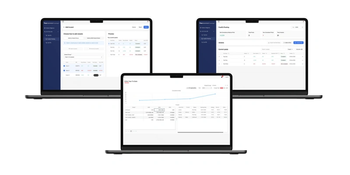DNV: Methanol Emerging as Scalable Marine Fuel but Economics Still Limit Uptake
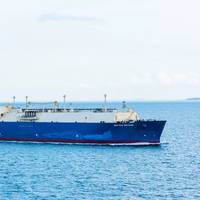
Methanol is emerging as a practical alternative fuel for deep-sea shipping as engines and technical systems reach high readiness levels, but high costs and limited supply continue to constrain wider adoption, classification society DNV said in a new report.As the industry explores multiple decarbonization pathways, methanol is gaining attention as a practical and scalable alternative fuel for deep-sea shipping, supported by over 450 methanol-capable vessels in operation and on order and technical solutions now available for all major ship types.DNV’s latest white paper…
Many Green Shipping Corridors Stalled
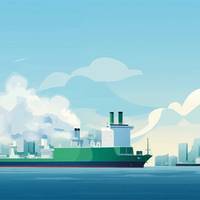
A new report from the Getting to Zero Coalition identifies 25 new green shipping corridors – trade routes designed to demonstrate and scale novel zero-emission fuels, vessels, and technologies – launched this last year, expanding the global total to 84 active initiatives.At a Crossroads: Annual Progress Report on Green Shipping Corridors 2025 reveals that new initiatives have been launched in major developing economies like China, India, Brazil, Chile, Ghana, and Kenya.For the first time since the report’s inception in 2022…
Is There a Viable LNG to Ammonia Fuel Pathway?

Is LNG to ammonia a viable pathway for helping shipowners get to net zero?From an engine point of view there is a pathway, but there are two points to consider, says Lars Tingbjerg Danielsen, Two-Stroke Promotion Manager – Newbuildings at Everllence. First, the case where an engine is capable of burning both methane and ammonia; second the case where an engine starts its service burning methane and then later switches to burning ammonia.“If we look at the idea of an engine capable of burning both methane and ammonia, it is our belief that this is not a request from the market.
Waterborne Technology Platform Welcomes EU STIP

The Waterborne Technology Platform has welcomed the EU’s Sustainable Transport Investment Plan (STIP) which it says is key in facilitating the uptake of sustainable alternative fuels.The European Commission published the STIP on November 5, setting out a roadmap to accelerate the energy transition of aviation and waterborne transport sectors. The STIP identifies investment needs and outlines measures to make better use of existing EU financing programmes in support of the required investments. It also introduces measures to support the implementation of the facilitating regulatory framework.
LNG: Greenwashing or Realism

The October delay at IMO of its Net Zero Framework continues to spark debate, and enthusiasm, about net zero fuel choices, including what LNG’s role should be.Debate is expected to continue too, as shipowners face a more complicated regulatory landscape now. Despite the uncertainty created by the delay, regulations continue to force emissions reductions, including existing IMO regulations such as CII and regional regulation such as FuelEU.With the number of dual-fuel LNG ships being ordered higher than methanol or ammonia alternatives…
Amogy and Samsung Heavy Industries Partner on Ammonia Power
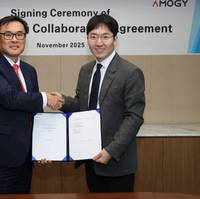
Ammonia-to-power company Amogy has signed a multi-year contract with Samsung Heavy Industries (SHI) for the manufacturing of Amogy’s systems.SHI plans to establish a dedicated facility in South Korea to produce and test Amogy’s systems, beginning with those required for Amogy’s pilot project in Pohang in 2026. The project will demonstrate the technology maturity and economic feasibility of Amogy’s ammonia-to-power systems for distributed clean power generation.This partnership…
Orders for Less Polluting Ships Hold Share

Cleaner-fuel burning ships accounted for 37% of cargo vessel orders in the first 10 months of 2025, unchanged from the year-ago period, as buyers were uncertain about when global rules for cutting maritime emissions will take effect, data from shipping consultancy AXSMarine showed.Overall gross tonnage (GT), an industry measure for vessel capacity, totaled 78 million from January through October, down from 113 million from the year-ago period, AXSMarine data showed.Orders for all of 2024 surged to a 17-year high after ships were rerouted to avoid Houthi rebel attacks in the Red Sea…
EU Unveils Sustainable Transport Investment Plan

The European Commission has adopted its communication on the Sustainable Transport Investment Plan (STIP), setting out a roadmap to rapidly accelerate the energy transition of aviation and waterborne transport sectors.To meet the fuel targets set out in the ReFuelEU Aviation and FuelEU Maritime Regulations, a significant volume of around 20 million tonnes of sustainable alternative fuels (13.2 Mt of biofuels and 6.8 Mt of e-fuels) will be needed by 2035. This calls for substantial investments from the market…
South Africa-Europe Route Could Run on Green Ammonia by 2029
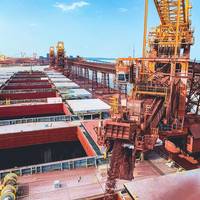
Ammonia-fuelled bulk carriers could be deployed on the South Africa-Europe iron ore trade route as soon as 2029 and scale toward full decarbonisation by 2035, according to a Global Maritime Forum study released last week.The study found that announced green ammonia projects could meet the corridor’s fuel demand competitively and that Saldanha Bay could emerge as a long-term green bunkering hub, supporting South Africa’s green hydrogen economy and the global transition to zero-emission shipping.To make the corridor operational by 2029…
Powering On with Methanol, or Not
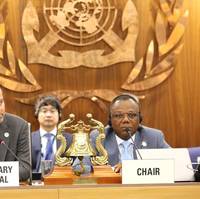
This week, Rolls-Royce announced that it has successfully tested the world’s first high-speed marine engine powered exclusively by methanol on its test bench in Friedrichshafen.Together with its partners in the meOHmare research project, Rolls-Royce says its engineers have therefore reached an important milestone on the road to climate-neutral and environmentally friendly propulsion solutions for shipping.Also this week, Everllence announced the world’s first conversion of its…
Maersk Tests Brazilian Ethanol Mix

Danish shipping company Maersk is testing a blend of Brazilian ethanol with methanol and marine diesel for its vessel engines as part of its efforts to further decarbonize operations, the company announced on Monday.The initiative could open a new market for Brazil's ethanol industry while helping to reduce the maritime shipping sector's carbon footprint, which currently accounts for about 3% of global greenhouse gas emissions.Maersk, which represents 15% of the global maritime shipping market, is testing a blend with 10% of ethanol.
Green Shipping Fuel Producers Call on IMO to Adopt NZF Deal

20 leading green fuel producers are calling on IMO delegates to seize a ‘once-in-a-generation’ opportunity to set shipping on a sustainable pathway.At this week’s extraordinary session, leaders will come together in London to discuss the adoption of the IMO’s Net Zero Framework (NZF) that was agreed in April earlier this year. A final vote is expected on Thursday or Friday.The companies, including European Energy, Liquid Wind, ET Fuels, HIF Global and Zero Waste, call on the IMO…
Energy Storage and New Fuels Work Together as One on Vessels
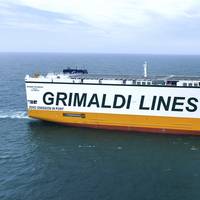
There’s an obvious fuel saving advantage, but partnering energy storage systems with new fuels brings other advantages too.There’s a new generation of vessels emerging which is exemplified by Grimaldi’s PCTC Grande Shanghai, claimed to reduce fuel consumption by 50% compared to previous-generation car carriers, and the NCL Vestland, a container feeder vessel similarly claimed to reduce energy consumption per TEU per nautical mile by 63%.What these vessels have in common is a propulsion system that combines energy storage systems and new fuels.As Henrik Helgesen…
BIMCO Adopts Methanol Bunkering Annex

The Documentary Committee of BIMCO has adopted a Methanol Annex to its Bunker Terms 2018. The annex is the latest addition to the BIMCO portfolio of contracts and clauses that support the maritime industry’s transition towards alternative fuels and decarbonization.The annex introduces new definitions to reflect ongoing developments in the bunkering landscape. It also targets the increasing importance of sustainability certification which is intended to verify the source and environmental…
GCMD and IAPH Forge Decarbonization Coalition Across Global Ports

The Global Centre for Maritime Decarbonisation (GCMD) and the International Association of Ports and Harbours (IAPH) have signed a two-year partnership agreement aimed at accelerating the decarbonization of the maritime sector.IAPH has a global port network comprising more than 200 port authorities and operators in over 85 countries. Together, GCMD and IAPH aim to strengthen the industry’s readiness for shipping’s fuel transition by tackling challenges and seizing opportunities in advancing alternative fuels bunkering…
Sustainable Fuel Chicken and Egg Redux. Maybe Some Ports Can Fix It.

In a recent sustainable fuel panel discussion, I once again found my self sucked into the sustainable fuel chicken and egg conundrum.I have discussed it before; shipowners will not buy ships that use a fuel for which no viable supply chain exists and fuel suppliers will not develop supply chains for which no buyers exist.In general, it is very difficult to break a chicken and egg conundrum, except through a direct directive or through, often very large, subsidies.Often direct directives leave the problem solution to the market.
Singapore Evaluates Ammonia Bunkering Solution

A consortium led by Keppel Ltd. has been appointed by the Energy Market Authority (EMA) and Maritime and Port Authority of Singapore (MPA) to conduct the next phase of the project to develop a low- or zero-carbon ammonia solution on Jurong Island, Singapore for power generation and bunkering.The appointment follows EMA and MPA’s Request for Proposal (RFP) process, where Keppel and its consortium partners, Sumitomo Corporation, and Advario, conducted a preliminary front-end engineering…
Mega Hydrogen Projects Could Make or Break the New Fuel Agenda

This week, RWE withdrew from a $10 billion Namibia green hydrogen project, the latest example of companies considering such investments.The German power utility said on Monday that it had withdrawn from Namibia's Hyphen green ammonia project because demand for hydrogen and hydrogen derivatives such as ammonia is developing slower than expected in Europe.The lack of new fuel availability for shipping is a problem that Accelleron has tackled in its newly released report Deadlock…
ABS Approves Ammonia Vent Gas Treatment System Design

An advanced design of an ammonia vent treatment system from HD Korea Shipbuilding & Offshore Engineering (HD KSOE) received approval in principle (AIP) from ABS and the Liberian International Ship and Corporate Registry (LISCR).The ammonia vent treatment system integrates compact scrubbers to treat ammonia fuel, which can escape during the purging process, to maintain safe concentration levels before discharge through the vent mast. HD KSOE says this design also minimizes wastewater production. ABS completed design reviews based on class requirements and IMO Interim Guidance.
ClassNK Grants Approval for SRC Group’s Methanol Superstorage Tank

ClassNK has issued an approval in principle (AiP) for a methanol fuel tank design concept developed by SRC Group, which uses a Sandwich Plate System (SPS) technology to almost double shipboard storage capacity for both methanol and ethanol.The certification demonstrates its feasibility from regulatory and safety perspectives.With the growing adoption of alternative fuels such as methanol in the maritime industry, the development of safe and efficient fuel storage solutions has become increasingly important.In contrast to traditional fuel tanks…
WinGD’s Ethanol-Fueled Two-Stroke Marine Engine to Hit Market in 2026
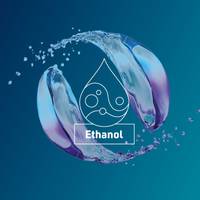
Swiss marine power company WinGD will offer the first ethanol-fueled two-stroke marine engine next year, with deliveries for newbuild and retrofit applications starting in 2027.The announcement follows a decade of investigation into ethanol fuel, including full-scale engine tests in 2018, and the successful launch of a methanol-fueled engine that uses the same combustion concept and is subject to the same safety regulations as the new ethanol engine.The new engine will be adapted from the X DF-M methanol-fueled engine…
NYK Completes First Ship-to-Ship Liquefied Ammonia Transfer
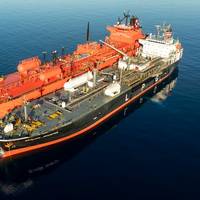
Japanese shipping group NYK has carried out its first ship-to-ship (STS) transfer of liquefied ammonia, moving around 23,000 metric tonnes from one carrier to another off the coast of Ceuta in Spain.The transfer, conducted on September 2, involved the NYK-owned ammonia carrier Berlian Ekuator, time-chartered by Mitsui & Co., and the Eco Enchanted, operated by U.S.-based ammonia trader Trammo. NYK said the transfer was completed under strict safety protocols.While the company has experience in STS transfers of crude oil…
Everllence Confirms Testing of Ethanol-Fueled Engine
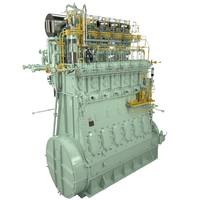
Everllence has confirmed the successful running on ethanol – at all load points – of a 90-bore ME-LGIM (-Liquid Gas Injection Methanol) engine in Japan.Everllence pioneered the ME-LGIM platform over a decade ago with the first commercial engine entering service in 2016 within the methanol-carrier segment.Building on experiences from these engines, Everllence scaled up its methanol burning portfolio in 2021 with the first ME-LGIM for a vessel outside the methanol carrier segment.



